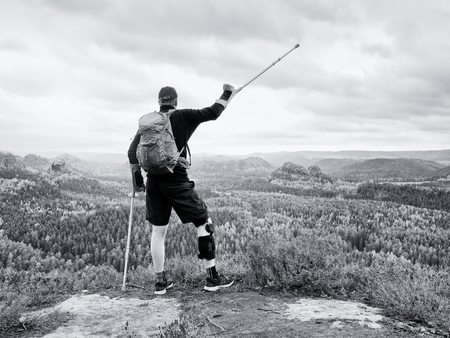1. Introduction to Wildlife Photography in the UK
Wildlife photography in the United Kingdom has a rich and complex history that mirrors the nation’s evolving relationship with the natural world. Its origins can be traced back to the mid-19th century during the Victorian era, a period marked by rapid industrialisation, scientific discovery, and burgeoning interest in natural history. Early practitioners of wildlife photography, such as Richard Kearton and his brother Cherry, were pioneers not only in photographic techniques but also in their attempts to document British fauna authentically. These early photographers operated within the cultural context of Victorian Britain, where fascination with cataloguing and controlling nature was prevalent. The advent of portable cameras and improved photographic processes enabled them to capture fleeting moments of animal behaviour previously unseen by the general public. However, Victorian values often prioritised collection and display over conservation, shaping an initial ethical framework that is markedly different from contemporary standards. This foundational period set the stage for ongoing debates about the responsibilities of wildlife photographers and the impact of their work on both public perception and wildlife welfare.
Victorian Era Ethics: Exploration and Exploitation
The Victorian era marked a pivotal period in the history of wildlife photography ethics in the UK. During the nineteenth century, attitudes towards wildlife were largely shaped by a spirit of exploration, scientific curiosity, and imperial expansion. However, this enthusiasm for discovery often translated into practices that today would be considered highly unethical.
Wildlife Collection and Hunting
At the heart of Victorian engagement with wildlife was the widespread collection and hunting of animals. Naturalists, explorers, and amateur collectors sought specimens for personal cabinets, museums, and scientific study. The prevailing mindset prioritised acquisition over conservation, with little regard for the long-term impact on species populations or habitats.
| Practice | Purpose | Ethical Consideration (Victorian Era) |
|---|---|---|
| Specimen Collection | Scientific study, display | Minimal; rarity increased value |
| Trophy Hunting | Status symbol, sport | Seen as acceptable, even virtuous |
| Egg Collecting | Hobby, scientific interest | No formal restrictions |
The Advent of Wildlife Photography
The invention of photography offered Victorians a new way to capture wildlife. Early photographic equipment was cumbersome, requiring patience and proximity to subjects. Rather than promoting non-invasive observation, photographers often staged scenes using captured or deceased animals to achieve desired results. Authentic representations of living creatures in their natural habitats were rare due to technical constraints and prevailing attitudes.
Lack of Ethical Guidelines
There were virtually no formal ethical guidelines governing how wildlife should be treated by photographers or collectors. The concept of animal welfare was in its infancy; concerns about disturbance or suffering rarely entered public discourse. Notable exceptions existed among pioneering naturalists who advocated restraint, but these voices were few and far between.
Cultural Context and Societal Views
The exploitation of wildlife was not only accepted but often celebrated as evidence of British ingenuity and dominance over nature. Educational institutions and learned societies encouraged the accumulation of specimens to advance scientific understanding without questioning the means by which they were obtained.
Legacy of Victorian Practices
The legacy of Victorian ethics is still evident in some contemporary debates about wildlife photography. Understanding this historical context is essential for appreciating how far ethical standards have evolved—and why ongoing vigilance remains crucial.
![]()
3. Post-War Shifts: Growing Conservation Awareness
The period following World War II marked a profound transformation in the ethical landscape of wildlife photography in the UK. This era was characterised by an increasing public consciousness regarding conservation, propelled by the devastation of war and a broader societal desire to protect what remained of Britain’s natural heritage. The emergence of conservation movements fundamentally influenced how wildlife was perceived and documented, both by professional photographers and enthusiastic amateurs.
The Rise of Conservation Movements
After 1945, organisations such as the Royal Society for the Protection of Birds (RSPB) and the Wildlife Trusts began to play pivotal roles in shaping public discourse around wildlife ethics. These groups campaigned vigorously against practices that endangered native species or disrupted delicate habitats, advocating for greater responsibility among those documenting nature. Wildlife photography, once considered a means of capturing trophies or curiosities, became increasingly seen as a tool for education and advocacy.
Royal Societies’ Influence
The endorsement of ethical standards by Royal Societies brought new gravitas to conservation ideals within photographic circles. The Zoological Society of London (ZSL) and similar institutions published guidelines encouraging minimal disturbance to animals during photography sessions. These recommendations were widely adopted by magazines, clubs, and local photographic societies throughout the UK, setting a precedent for best practice and influencing generations of photographers.
Mainstream Advocacy for Animal Welfare
During the post-war decades, animal welfare entered mainstream British culture with renewed vigour. Influential figures such as Sir Peter Scott—founder of the Wildfowl & Wetlands Trust—used their platforms to promote responsible storytelling through imagery. Media outlets increasingly highlighted the importance of portraying wildlife without resorting to staged or intrusive techniques. As a result, ethical considerations became not only a matter of personal integrity but also a reflection of wider societal values concerning respect for Britain’s unique fauna.
This shift established the foundation for contemporary codes of conduct in UK wildlife photography, embedding principles of respect, non-interference, and stewardship at the heart of the profession—a legacy that continues to shape attitudes today.
4. Guidelines and Legislation: Shaping Modern Practice
In the evolution of wildlife photography ethics in the UK, formal guidelines and legislation have played a pivotal role in shaping responsible practice. As public awareness of environmental issues increased during the twentieth century, so too did the recognition that photographers must act as stewards of the natural world. Today, a robust framework of laws, codes of conduct, and organisational policies underpins ethical wildlife photography across the UK.
Key Legislation Impacting Wildlife Photography
UK legislation has established clear boundaries for photographers to prevent disturbance or harm to wildlife. Notable acts include:
| Legislation | Year Enacted | Main Provisions Relevant to Photography |
|---|---|---|
| Wildlife and Countryside Act | 1981 | Makes it illegal to intentionally disturb or harm protected species; regulates photography near nests or dens. |
| Countryside and Rights of Way Act (CRoW) | 2000 | Extends protection for habitats and restricts access where disturbance could occur. |
| Conservation of Habitats and Species Regulations | 2017 | Implements EU directives on habitat conservation; prohibits interference with certain species without licence. |
The Role of Codes of Conduct
Beyond statutory law, professional bodies such as The Wildlife Trusts and the RSPB have developed comprehensive codes of conduct that set out best practices for wildlife photographers. These guidelines emphasise respect for animal welfare, habitat integrity, and the wider ecosystem. Key recommendations include:
- Avoiding any action that could cause distress or alter natural behaviours.
- Maintaining an appropriate distance from wildlife, using telephoto lenses where necessary.
- Never baiting or luring animals for the purpose of a photograph.
- Obtaining landowner permissions and respecting restricted areas.
- Reporting irresponsible behaviour witnessed in the field.
Cultural Influence on Compliance and Expectations
The widespread adoption of these ethical standards reflects broader shifts in British attitudes towards conservation and outdoor responsibility. Today, both amateur and professional photographers are increasingly expected to be ambassadors for wildlife protection—balancing their creative ambitions with a duty to minimise human impact. Organisations provide training and resources to help practitioners understand their legal obligations and ethical responsibilities, ensuring that wildlife photography in the UK aligns with contemporary conservation values.
5. Digital Age Dilemmas: New Challenges and Responsibilities
The advent of digital technology has revolutionised wildlife photography in the UK, introducing a complex array of ethical dilemmas and opportunities. With high-resolution cameras, drones, and sophisticated editing software now readily accessible, photographers possess unprecedented power to capture, manipulate, and distribute images. While these advances have democratised the field and enabled wider public engagement with British wildlife, they have also brought significant risks.
The Double-Edged Sword of Accessibility
On one hand, digital tools and social media platforms such as Instagram and Twitter have allowed both amateur and professional photographers to share their work instantly with a global audience. This widespread visibility can foster appreciation for the UK’s unique biodiversity and galvanise conservation efforts. On the other hand, the pressure to capture “viral” images has, at times, led to questionable practices—such as baiting animals or disturbing sensitive habitats—in pursuit of the perfect shot.
Manipulation and Authenticity Concerns
Photo editing software poses another ethical challenge. The ease of altering images—ranging from minor adjustments to significant fabrications—can mislead viewers about animal behaviour or environmental conditions. In the UK, debates within professional circles have intensified over what constitutes an acceptable level of post-processing. Leading organisations now advocate for transparent disclosure of any digital manipulation to maintain public trust and scientific integrity.
Social Media’s Role in Shaping Public Discourse
Social media not only accelerates image dissemination but also shapes public discourse around wildlife ethics. Viral content can spark important conversations about responsible fieldcraft, but it may also incentivise risky behaviour among less experienced enthusiasts seeking online recognition. Consequently, British wildlife photography communities are increasingly proactive in educating newcomers about legal protections—such as those afforded by the Wildlife and Countryside Act 1981—and best practice guidelines issued by bodies like the Royal Photographic Society.
Evolving Professional Standards
The digital age has prompted leading UK wildlife photographers and associations to refine codes of conduct that emphasise respect for subjects and habitats above all else. Continuous dialogue among practitioners is vital to ensure that evolving technologies enhance rather than undermine ethical standards. As leaders in the field, it is our responsibility to balance innovation with stewardship—setting an example for future generations navigating this rapidly changing landscape.
6. Contemporary Best Practices and Community Leadership
In the present era, ethical standards for wildlife photography in the UK have evolved considerably, reflecting both societal expectations and the influence of professional bodies.
Current Expectations for British Wildlife Photographers
Today, British wildlife photographers are expected to prioritise the welfare of their subjects above the pursuit of a perfect shot. This means respecting natural habitats, minimising disturbance, and avoiding baiting or other manipulative practices that could harm animals or ecosystems. The public’s growing environmental awareness has further reinforced these expectations, with audiences increasingly scrutinising images for authenticity and responsible behaviour.
The Role of Professional Organisations
Leading organisations such as the Royal Photographic Society (RPS) and the British Wildlife Photography Awards (BWPA) play a pivotal role in setting ethical benchmarks. These institutions provide comprehensive codes of conduct, offer training workshops on responsible fieldcraft, and implement rigorous judging criteria to discourage unethical submissions. Their leadership helps shape industry norms and provides a framework within which both amateur and professional photographers can operate confidently.
Mentorship and Community-Led Initiatives
Beyond formal structures, mentorship is a vital component in fostering ethical practice. Experienced photographers often take on a stewardship role, guiding newcomers not only in technical skills but also in understanding the significance of ethical considerations. Many local camera clubs and conservation groups across the UK actively promote dialogue around best practices, sharing case studies, hosting talks from leading experts, and encouraging peer-to-peer accountability.
The Power of Collective Responsibility
Ultimately, community-led initiatives are instrumental in driving positive change within the field. By championing transparency, constructive feedback, and mutual support, British wildlife photographers collectively uphold high standards that reflect both national values and global conservation priorities. This collaborative approach ensures that ethical wildlife photography continues to thrive as an integral part of the UK’s natural heritage.
7. Looking Forward: Evolving Ethics for Future Generations
The landscape of wildlife photography ethics in the UK is poised for significant evolution as we look to the future. Environmental changes, such as shifting habitats and the increasing impact of climate change, will demand that photographers adapt their practices with heightened sensitivity. The importance of minimising disturbance to wildlife will become ever more crucial, especially as some species face mounting pressures on their populations and habitats.
Societal values are also undergoing transformation. The British publics growing awareness of conservation issues, animal welfare, and environmental stewardship is likely to lead to a collective expectation for ethical conduct from both amateur and professional photographers. This shift will foster a culture where integrity, respect for nature, and transparency in photographic methods are not only encouraged but required.
Technological innovation presents both challenges and opportunities for ethical practice. Advances such as remote camera traps, drones, and AI-powered editing tools offer new ways to capture stunning images while reducing direct human presence in sensitive areas. However, these technologies also raise fresh questions about intrusion, consent (where applicable), and the authenticity of images presented to the public. It is imperative that the UK’s wildlife photography community anticipates these dilemmas and develops robust guidelines that reflect both current realities and future possibilities.
Leadership within the field—through professional associations, educational institutions, and experienced mentors—will be pivotal in setting standards that balance creative ambition with ecological responsibility. Open dialogue and ongoing education about evolving best practices will ensure that future generations of photographers not only comply with existing codes but also contribute thoughtfully to their refinement.
Ultimately, the trajectory of wildlife photography ethics in the UK will be shaped by a dynamic interplay between environmental necessity, societal progress, and technological advancement. By remaining vigilant, reflective, and proactive, the community can help ensure that this art form continues to celebrate Britain’s natural heritage without compromising its wellbeing for generations yet to come.


